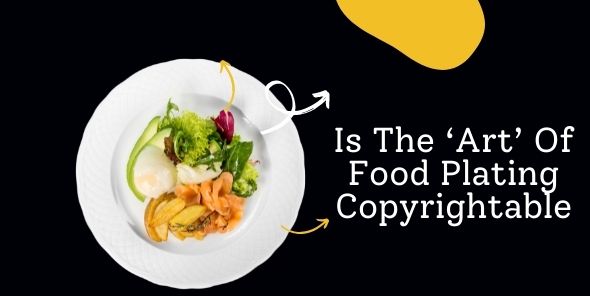Art of Food plating
First impressions are profoundly engraved on the mind. Food was formerly only seen as a means of survival. Those days are long gone, and chefs are working hard to improve the visual experience.
In today’s context, Culinary talents encompass more than just the preparation or cooking of a dish; they also include the presentation, arrangement, or appearance of their cuisine, frequently referred to as plating. A lot of attention is placed on the art of plating, especially in the restaurant business.
Food plating and copyright law
This article will discuss a topic related to the complex subject of “food plating” and how it is protected under copyright law.
Food plating is the technique of enhancing food presentation by arranging and decorating it to add value. Before serving, a restaurant chef may endeavor to make an artistic presentation of food with maximum precision and perfection.
This presentation most likely entails using color combinations, layering, textures, and placement, all of which need a Chef’s creativity, aesthetics, labor, and talent.
The dilemma is whether a chef’s aesthetic plating of a dish (who is also the original creator) may be protected under intellectual property rights.
Copyright does not exist in simple ideas, but in the original expression of ideas, according to the idea/expression dichotomy. Food presentation on a plate can be considered a Chef’s idea to use their intellect and creativity to highlight a particular meal.
Artistic works
Section 13(1)(a) of the Copyright Act of 1957 protects original artistic works, while Section 2(c)(iii) defines “artistic work” as “any other work of artistic craftsmanship.” So, for a Chef to claim copyright protection for their food presentation on a plate, there must be sufficient proof of inventiveness to meet the originality threshold.
Copyright protection will be available if the presentation is unique. Copyrighting a meal will help to establish a special relationship between the chef and his creation. It will also grant him the authority to prevent other chefs, hotels, and restaurants from replicating how he displays the food.
Currently, there is no explicit rule or rules in place to protect artistic work used in the plating of a dish. However, as food becomes more widely recognized as a work of art, chefs and restaurants may become more aggressive in using intellectual property laws to preserve the creative presentation of their cuisine.
Conclusion
We have a terrific example of designer cakes, which are accessible in the market these days and are elegantly constructed by chefs with distinctive designs, shapes, and patterns.
It is thought that copyright protection for food plating not only ensures that a Chef’s art is rewarded by assisting in the elimination of knock-offs and preserving the exclusivity of their creative dishes, but it also encourages food sector creativity.
The quick analysis reveals that copyrighting food plating is a reasonable option, given the conditions for obtaining copyright under Indian law. It will be protected as an original artistic work, granting chefs the same economic and moral rights as writers of other works.




